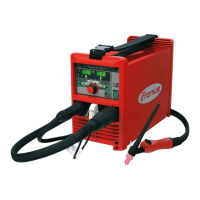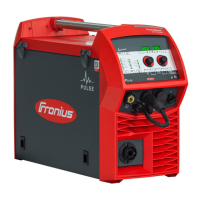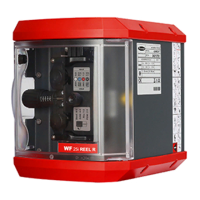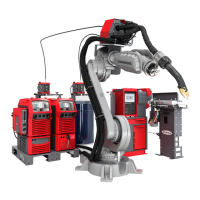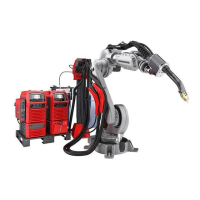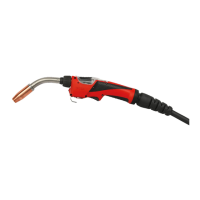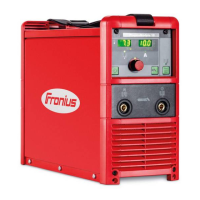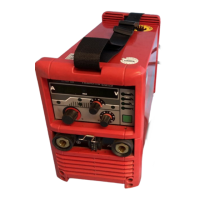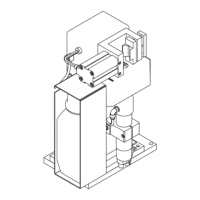Meandering
welding currents
If the following instructions are ignored, meandering welding currents can devel-
op with the following consequences:
-
Fire hazard
-
Overheating of parts connected to the workpiece
-
Damage to ground conductors
-
Damage to device and other electrical equipment
Ensure that the workpiece is held securely by the workpiece clamp.
Attach the workpiece clamp as close as possible to the area that is to be welded.
Position the device with sufficient insulation against electrically conductive envir-
onments, such as insulation against conductive floor or insulation to conductive
racks.
If power distribution boards, twin-head mounts, etc., are being used, note the fol-
lowing: The electrode of the welding torch / electrode holder that is not used is
also live. Make sure that the welding torch / electrode holder that is not used is
kept sufficiently insulated.
In the case of automated MIG/MAG applications, ensure that only an insulated
wire electrode is routed from the welding wire drum, large wirefeeder spool or
wirespool to the wirefeeder.
EMC Device
Classifications
Devices in emission class A:
-
Are only designed for use in industrial settings
-
Can cause line-bound and radiated interference in other areas
Devices in emission class B:
-
Satisfy the emissions criteria for residential and industrial areas. This is also
true for residential areas in which the energy is supplied from the public low-
voltage mains.
EMC device classification as per the rating plate or technical data.
EMC measures In certain cases, even though a device complies with the standard limit values for
emissions, it may affect the application area for which it was designed (e.g. when
there is sensitive equipment at the same location, or if the site where the device
is installed is close to either radio or television receivers).
If this is the case, then the operator is obliged to take appropriate action to recti-
fy the situation.
Check and evaluate the immunity to interference of nearby devices according to
national and international regulations. Examples of equipment that may be sus-
ceptible to interference from the device include:
-
Safety devices
-
Network, signal and data transfer lines
-
IT and telecommunications devices
-
Measuring and calibrating devices
Supporting measures for avoidance of EMC problems:
1.
Mains supply
-
If electromagnetic interference arises despite the correct mains connec-
tion, additional measures are necessary (e.g. use of a suitable line filter)
2.
Welding power-leads
-
must be kept as short as possible
-
must be laid close together (to avoid EMF problems)
-
must be kept well apart from other leads
13
EN
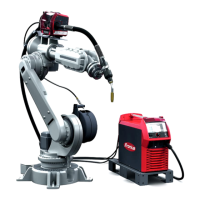
